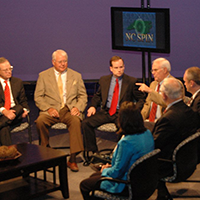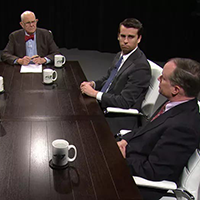The Tar Heel State has many sources of pride: renowned institutions of higher education, beautiful beaches, world class golf, rich history and tradition, the Appalachian trail, a dozen military bases, and a AAA credit rating. But it ranks dead last in the investment performance of its pension plan.
As Institutional Investor reported in February: “For the three- and five-year periods ending June 2022, the plan ranked dead last across 50 state retirement systems.” And over 20 years it has lagged terribly behind states that are comparable to North Carolina.
Brad Briner, a candidate for state treasurer, points out on his website that four other large states — Florida, Virginia, Wisconsin and Texas — have returned an average of 7.6% for the last 20 years, compared to 6.2% for North Carolina. He states that “North Carolina has underperformed at a rate of 1.4% per year.”
But Briner is putting it charitably. The difference between 6.2% and 7.6% may be 1.4 percentage points, but 6.2% is actually 23% lower than 7.6%. The North Carolina pension has underperformed these comparable states, not by 1.4%, but by 23% over 20 years.
In recent years, the North Carolina Retirement System (NCRS) has engaged in a wrongheaded approach to investing the pension’s assets. It has invested heavily in cash, Treasurys, and fixed income — all of which are lower fee allocations. The NCRS is proud to be paying the lowest fees among state pension plans. But the state is getting what it is paying for — first in low fees, last in returns.
As a taxpayer, would you rather have NCRS pay $1 of fees for a 5% return or $2 for a 7% return? Correcting this requires two changes. The NCRS should allocate more of its portfolio to return-seeking assets; and governance must change.
Most public pensions allocate 70 or even 80% of their funds to return-seeking assets and the rest to fixed income or cash. NCRS has approximately 35% invested in cash, Treasurys and fixed income. The portfolio should have a substantial allocation to equities and to other return seeking assets, such as private equity, real estate and private credit. But NCRS is under allocated to them.
Governance is just as important. North Carolina is one of the only states that leaves the allocation of the pension plan entirely in the hands of one elected official. The state treasurer is the sole fiduciary for the investment of the $115 billion fund. As an elected official, the treasurer can be subject to political winds and considerations that are not necessarily consistent with the long term investment focus of the pension. Moreover, when the Treasurer changes, it is likely (and has been the case) that investment policy changes as well. But a less political board structure provides continuity. This is the hallmark of better public pension plan governance.
Political governance can cost billions of dollars. When I ran the United States government’s pension agency, the Pension Benefit Guaranty Corporation, I inherited a policy similar to North Carolina’s. The PBGC’s portfolio was 75-85% fixed income. It took little risk and therefore generated little return.
In 2008, I presented a new policy which the board adopted. The new policy would have invested 50-55% in return-seeking assets. However, a new administration took over in early 2009.
Unfortunately, although the PBGC is governed by a board, that board is composed of three cabinet secretaries who all turn over with a new administration. In early 2009, the markets were very volatile and challenging. So, due to poor governance, the PBGC simply froze the implementation of this new investment policy. In the spring of 2009, however, equity markets bounced back powerfully, and the PBGC was left on the sidelines. By June of 2010, this had cost the PBGC $10 billion!
This was not due to party political differences. Rather, it was the inherent nature of political governance. Avoiding criticism, winning political points, protecting the boss, are all natural to politics but not to fiduciary management of assets designed to pay government workers’ pensions for decades in the future.
So NCRS should change its asset allocation and its governance. And, if somehow this all seems academic and obscure, let’s put it in more concrete terms. If North Carolina achieved similar returns to those of the peer states mentioned above, it would have nearly $3 billion more in annual tax revenue that would not have to go to the pension plan.
Better investment policy and better governance of the pension plan are multi-billion dollar issues for the taxpayers of the beautiful Tar Heel State.







